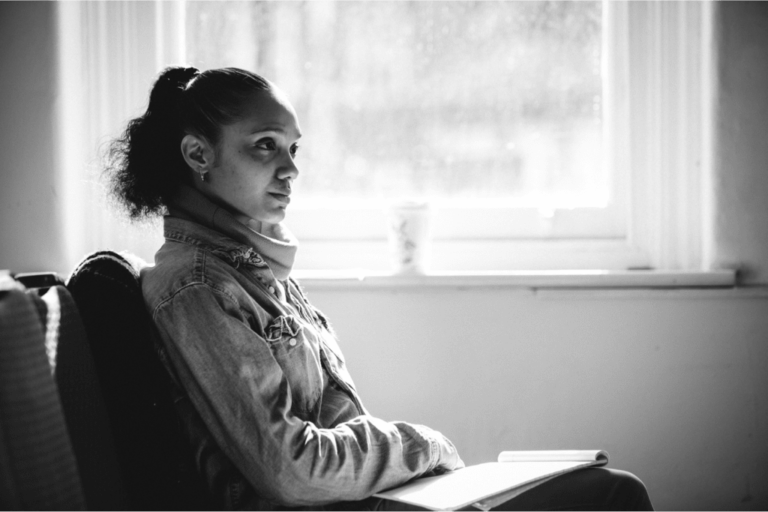By Robbie Wojciechowski
Sam has been a part of the Step Up scheme for six months, and in that time has gone from working as a cycle courier, cycling up to 70 miles a day; to casually labouring as a gardener in Haggerston, two days a week. For the first time in ten years, he’s in stable accommodation. Renting in Peckham, his landlord is familiar with the difficulties faced by creative people. She herself is a writer. Sam met her when he was first thinking of moving to London. She offered him his first room, and now seven years later, Sam is renting the whole of the flat, having turned his cramped old bedroom into a studio.
Artwork is sprawled everywhere across the flat. On the walls, floors, and coffee tables, experiments are in development. Sketches, etchings, and drawings litter their flat. In the studio upstairs, box upon box reveals the archive of Sam’s drawings. Sprawled across his desk are paint-brushes, marker pens and different types of paper.
Recently exhibiting at a little side-street cafe in New Cross, South East London, Sam is now starting to sell some of his work. He’s even starting to take commissions: one for a friend working for the Labour Party, the other helping design album sleeves. It’s the start of a tidy living, but it isn’t yet enough to fully stop the courier or labouring work.
The situation stifling him from delivering his work full time is one I’ve watched fixate so many phenomenal young artists. It’s a similar difficulty I see when I read any kind of novelists work. In taking up a creative passion as full-time work, it often means compressing the identity of our work into small consumable items. What traps Sam is how to make his creative work as a full time career interest, while still being able to maintain the freedom and level of expression that allows him to create his work in the first place.
Living in unstable accommodation for much of his time in London, on sofas and floors, and in whatever cheap housing came his way, Sam has been able to produce a huge body of work. But in doing so, it often meant being totally removed from society, something that was often destructive to long term progression.
Similarly, for many young workers entering the creative industries, sacrificing stable living to build a creative portfolio is common practice. Whether it’s finding access to a co-op, squatting, or living off friends sofas, falling off the radar seems to have become a well trodden path to a career.
One day, Sam’s work will see him with a prominent foot in galleries, or perhaps with him publishing his notebooks as art pieces, but in order to do so, should the struggles and sacrifices he make have to extend towards an unstable life where he and his partner have to sacrifice a home?
Living off the radar
It’s this precariousness, within people’s home lives that is most concerning. Living off the radar, is often how people make ends meet.
For Sam and the community of couriers working in London, it’s the nature of it being off radar work that is attractive. But it’s also the same reason why the work is often irregular, underpaid, or unregulated. Working hours can stretch well past the legal limit, and irregular shift patterns mean that he never knows when he’s going to be in work.
The creative economy shouldn’t be dependent on people going off the radar. It’s this insecurity at home or at work, that can lead to anxiety, disengagement, and paranoia.
If Sam is to make it as an artist, it means going “legit”. With a home and partner his life has taken a big step forward, and finding a way to earn his keep without having to enter the precarious and irregular courier jobs is the priority. Creative incomes are hard to make, and working as an artist doesn’t fit a conventional nine-to-five model. It’s a job that is as much administrative as it is creative.
Sam has hundreds of ideas, and one will eventually earn him his break. But until that point, it’s his cargo bike that keeps him in the flat and in work.







